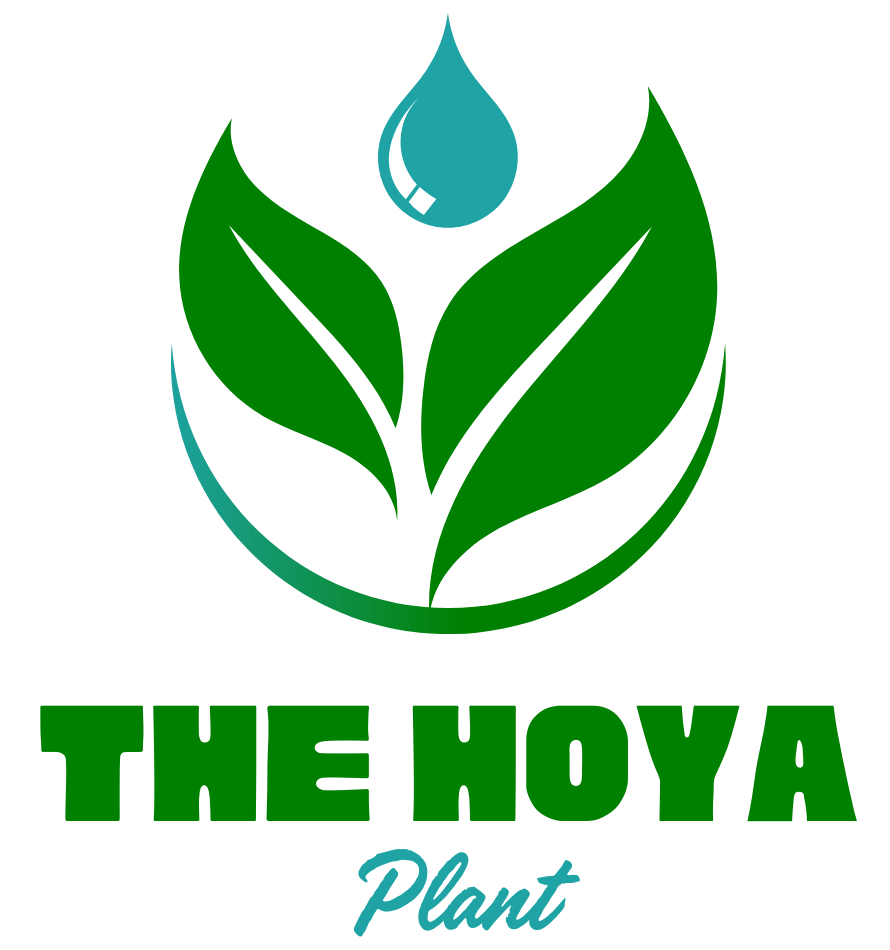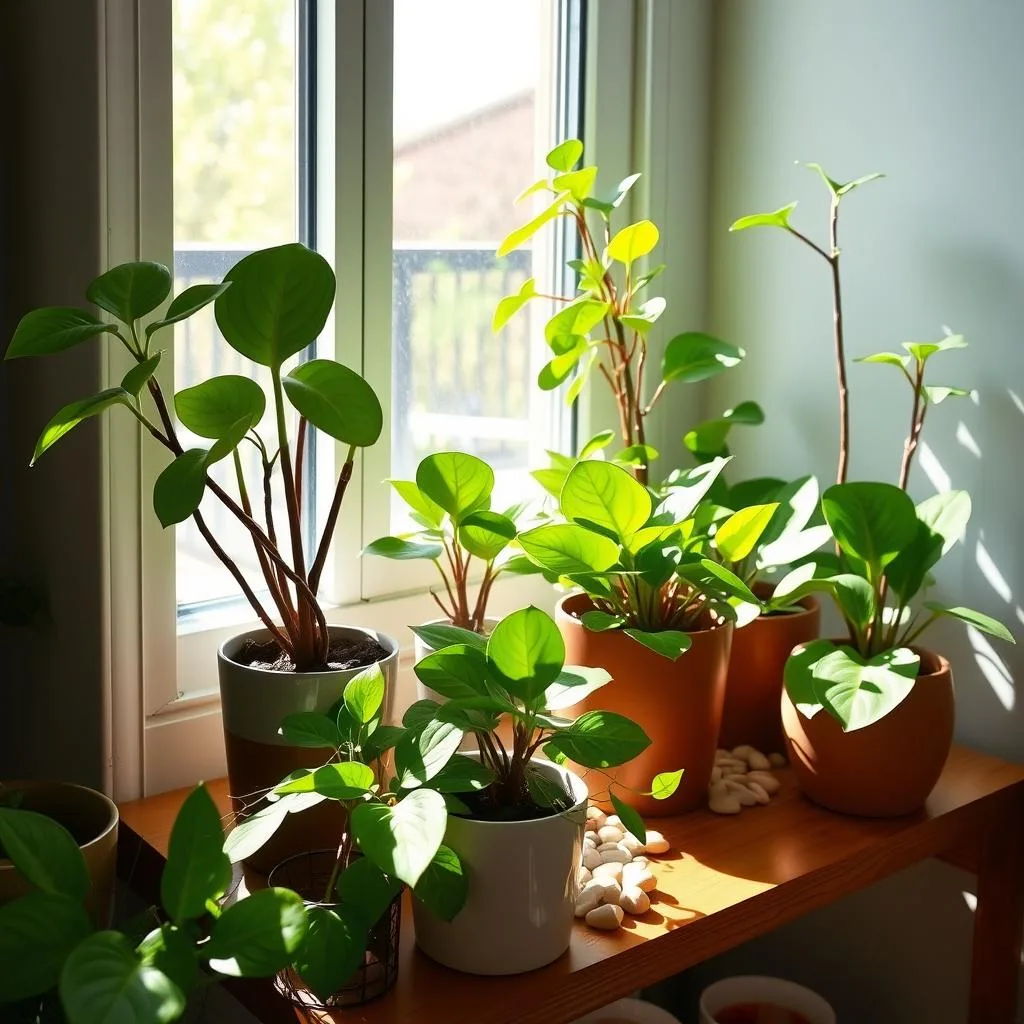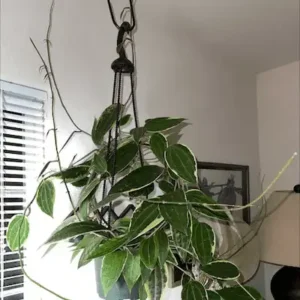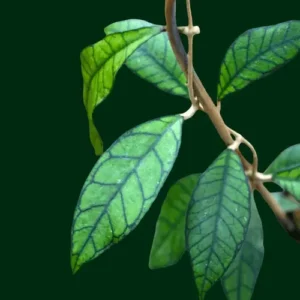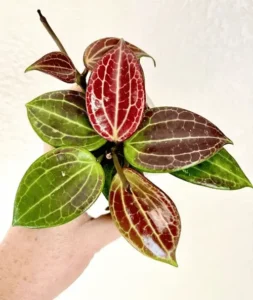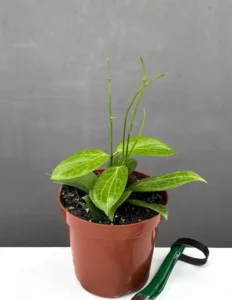Introduction
In this article, we’ll explore the nuances of light for Hoya plants, from understanding their natural habitat to tips on how to replicate ideal conditions indoors. By learning about the best light conditions for your Hoya, you’ll set the stage for lush growth and potentially even encourage those sought-after blooms. Hoyas are known for their ability to adapt to various indoor conditions, making them a popular choice for plant collectors of all levels. However, one of the most important factors in ensuring the health and blooming potential of a Hoya is proper lighting.
Understanding Hoya’s Natural Habitat and Light Needs
In the wild, Hoya plants are epiphytes, which means they grow on other plants or trees rather than in the soil. As a result, they typically receive dappled sunlight filtered through the tree canopy. This environment provides them with bright but indirect light, which is crucial for their growth and well-being.
Unlike plants that thrive in full sun, Hoyas have adapted to lower light levels found in their natural habitat. Too much direct sunlight can cause sunburn on their waxy leaves, leading to discoloration and damage, while too little light can result in slow growth and a lack of flowering.
By mimicking these natural conditions indoors, you can ensure that your Hoya plant receives the optimal amount of light to grow healthy leaves and produce blooms. The challenge, then, is striking the right balance between providing enough light without exposing the plant to harsh, direct sunlight for prolonged periods.
Types of Light for Hoya Plants
When growing Hoyas indoors, it’s important to understand the different types of light and how they affect your plant. Below are the main light types that impact Hoya growth:
Direct Sunlight
What It Is
This is the light that comes directly from the sun and shines onto the plant without any filter.
Pros and Cons for Hoyas
While some hardy Hoya species, such as Hoya carnosa, can tolerate short periods of direct sunlight (particularly in the morning or late afternoon), prolonged exposure can lead to scorched leaves. Hoyas, in general, prefer bright, indirect light rather than the intense heat and light from direct sun.
Bright, Indirect Light
What It Is
This is the light that is bright but filtered or diffused before reaching the plant. It mimics the natural conditions found under a tree canopy in the plant’s native environment.
Pros and Cons for Hoyas
Bright, indirect light is ideal for most Hoya species. It provides enough energy for the plant to grow and flower without causing sun damage. This type of light helps the plant develop strong, lush foliage and can encourage the production of flowers.
Medium Light
What It Is
Medium light is indirect light that is less intense than bright light but still sufficient for most plants. It is typically found in rooms with windows that don’t receive direct sunlight for most of the day.
Pros and Cons for Hoyas
Hoyas can survive in medium light conditions, but their growth may be slower, and flowering may be infrequent or nonexistent. If you’re mainly growing Hoyas for their foliage, medium light can be sufficient, but if you’re hoping for flowers, brighter conditions are preferable.
Low Light
What It Is
Low light conditions occur in areas that are far from windows or where light is blocked by furniture, walls, or other obstacles.
Pros and Cons for Hoyas
While Hoyas can survive in low light environments, their growth will be stunted, and they are unlikely to flower. Over time, a lack of light can cause leaves to become smaller and more spaced out, and the plant may develop a leggy appearance as it stretches toward any available light source.
Determining the Best Light Conditions for Your Hoya
Now that we’ve covered the basic types of light, let’s dive into how to determine the best lighting conditions for your Hoya plant.
Location of Your Hoya Plant Indoors
The placement of your Hoya in your home will significantly impact the light it receives. Ideally, Hoyas should be placed near a window that provides bright, indirect light for most of the day. East-facing windows are often ideal because they receive gentle morning sunlight, which won’t scorch the leaves.
South- or west-facing windows can also work, but you may need to provide some shade or move the plant back from the window to prevent direct afternoon sun from burning the leaves. Sheer curtains or blinds can be used to filter the light if necessary.
Signs Your Hoya is Getting the Right Amount of Light
Healthy, Glossy Leaves
A Hoya receiving the right amount of light will have vibrant, waxy leaves that look lush and healthy. Inadequate light can cause leaves to become dull or discolored.
Steady Growth
While Hoyas are not fast growers, they should still produce new leaves and stems during the growing season. If your plant seems stagnant, it may need more light.
Flowering
Hoyas are known for their beautiful flowers, but they are picky bloomers. If your Hoya receives plenty of bright, indirect light, it is more likely to produce blooms. Lack of flowering is often a sign that the plant isn’t getting enough light.
Signs Your Hoya is Receiving Too Much Light
Sunburned Leaves
If your Hoya (plant) is exposed to too much direct sunlight, its leaves may become scorched, showing signs of yellowing, browning, or drying out at the edges.
Brittle or Dry Leaves
Excessive sunlight can also cause leaves to become brittle or excessively dry. Moving the plant to a spot with more diffused light can help alleviate these symptoms.
Signs Your Hoya is Not Getting Enough Light
Leggy Growth
Hoyas in low-light conditions may develop elongated, leggy stems as the plant stretches toward the nearest light source. This can make the plant look unbalanced or sparse.
Smaller, Less Glossy Leaves
When deprived of adequate light, Hoyas often produce smaller, less vibrant leaves. The plant may lose its lush appearance over time.
Lack of Flowers
If your Hoya isn’t blooming, insufficient light is likely the culprit. While many factors contribute to blooming, light is one of the most critical.
Artificial Lighting for Hoyas
For those who don’t have access to sufficient natural light, artificial grow lights can be an excellent solution for Hoyas. Here’s what you need to know about using artificial lighting for your Hoya plants:
Types of Grow Lights
Fluorescent Lights
Fluorescent lights, particularly T5 or T8 tubes, are a popular choice for growing indoor plants. They emit a broad spectrum of light that mimics natural sunlight and are relatively affordable. Place the fluorescent lights about 6–12 inches above your Hoyas for best results.
LED Grow Lights
LED lights are energy-efficient and have a long lifespan. They come in full-spectrum varieties, which are ideal for plant growth. LED lights should also be positioned close to the plants but not so close that they cause excessive heat or leaf burn.
Compact Fluorescent Lights (CFLs)
For smaller setups or individual plants, CFLs can be a good choice. They are similar to fluorescent tubes but more compact, making them ideal for tight spaces.
How Long to Use Grow Lights
If using artificial lights, aim to provide your Hoyas with 12–14 hours of light per day. This mimics the natural light cycle they would experience in their native habitat. Be sure to place the lights on a timer to maintain consistency and prevent overexposure.
Distance from the Light Source
Depending on the type of grow light you’re using, you’ll need to adjust the distance between the light and your Hoya. As a general rule of thumb, keep the light about 12–18 inches above the plant. Too much proximity to the light can cause leaf burn, while too much distance will reduce the light’s effectiveness.
Seasonal Light Adjustments for Hoya Plants
Hoyas, like most plants, have different light needs throughout the year. During the winter months, when daylight hours are shorter, you may need to adjust your Hoya’s light exposure. Moving your plant closer to a window or supplementing with grow lights can help maintain healthy growth through the darker months. Conversely, in the summer, you may need to move your plant further from the window to avoid intense, midday sun.
| FAQs What kind of light do Hoyas need? Bright, indirect light is ideal for most Hoya species. It provides enough energy for the plant to grow and flower without causing sun damage. This type of light helps the plant develop strong, lush foliage and can encourage the production of flowers. How much sunlight does a Hoya need? Ensure that your Hoya plant receives the optimal amount of light to grow healthy leaves and produce blooms. The challenge, then, is striking the right balance between providing enough light without exposing the plant to harsh, direct sunlight for prolonged periods. Where is the best place to put a Hoya? The placement of your Hoya in your home will significantly impact the light it receives. Ideally, hoyas should be placed near a window that provides bright, indirect light for most of the day. East-facing windows are often ideal because they receive gentle morning sunlight, which won’t scorch the leaves. |
Conclusion
Finding the best light for your Hoya plant is crucial to ensuring its growth and vitality. These tropical plants thrive in bright, indirect light, but they can adapt to a range of indoor environments with proper care. By paying attention to the signs of too much or too little light, you can adjust your Hoya’s placement to provide it with optimal lighting conditions.
Whether you’re growing Hoyas for their lush foliage or their beautiful flowers, providing the right light will help your plants thrive. With the right balance of natural or artificial light, your Hoyas will reward you with stunning, waxy leaves and, if you’re lucky, clusters of fragrant, star-shaped blooms that will make your home even more beautiful.
